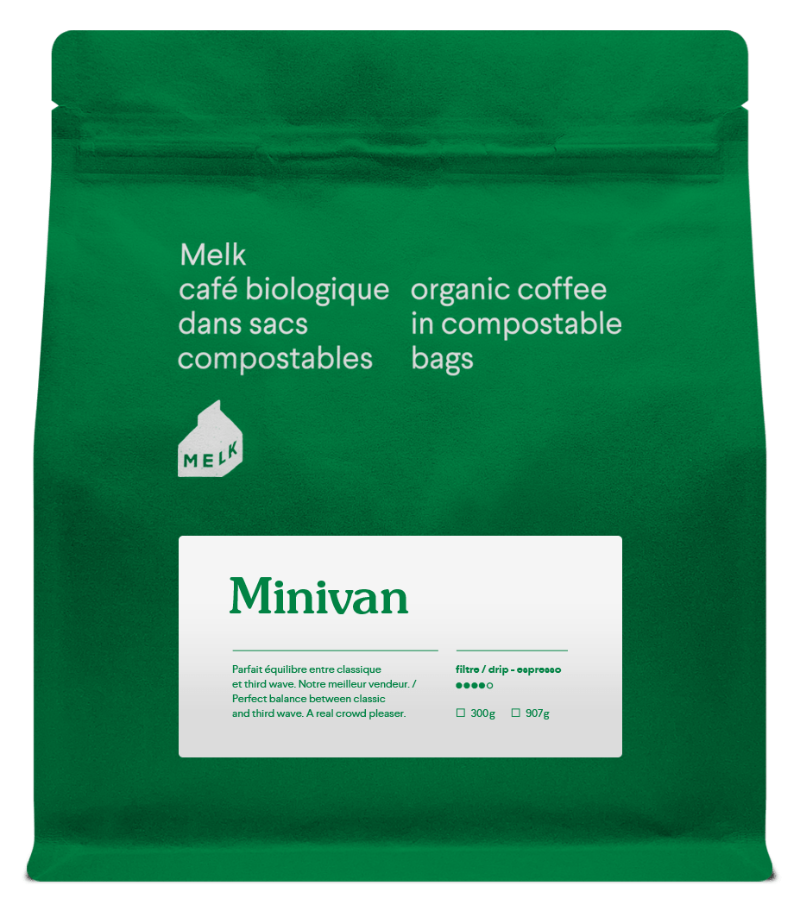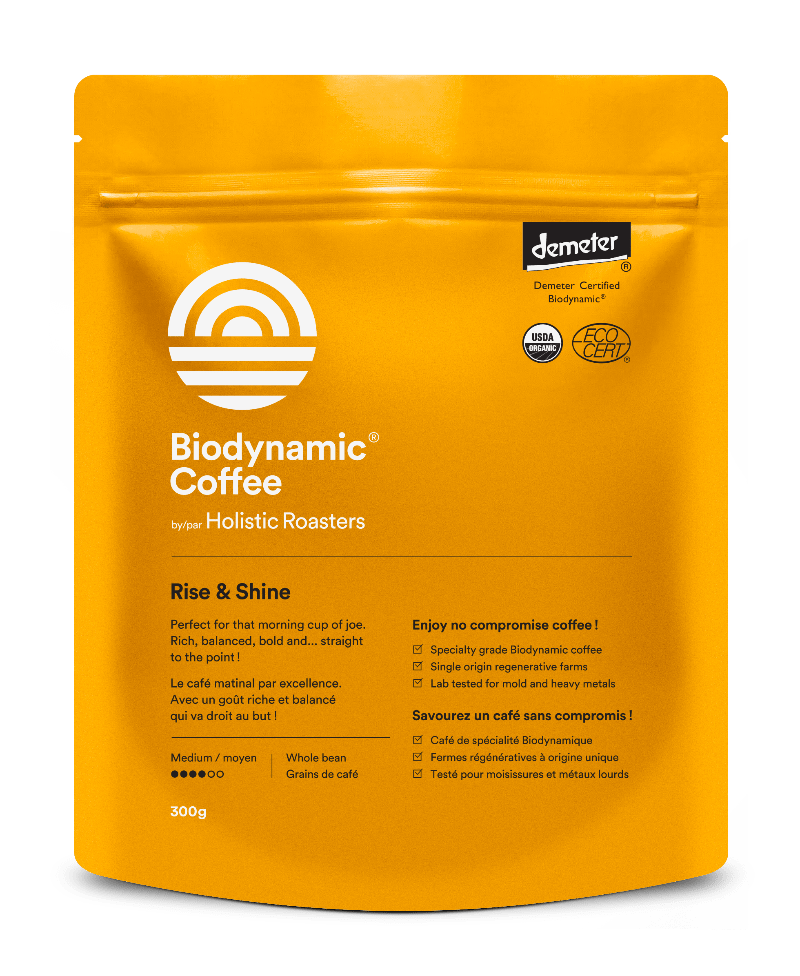Timing Your Clean Coffee for Optimal Hormonal Health
The Coffee Cortisol Connection
Picture this: It's 6 AM. Your alarm goes off, and the first thing you do is stumble to the kitchen for that life-saving cup of coffee. By 10 AM, you're jittery. By 2 PM, you're crashing hard. Sound familiar?
What if we told you that the problem isn't your coffee, it's when you're drinking it? The timing of your coffee consumption can make the difference between sustained, clean energy and a hormonal rollercoaster that leaves you exhausted.
Listen while you browse:
Google's Deep Dive Podcast on Timing Your Clean Coffee for Optimal Hormonal Health
What You'll Learn About Coffee and Cortisol
The Quick Scoop
Timing your coffee consumption based on your natural cortisol rhythm can transform your energy levels and hormonal health. By waiting 90-120 minutes after waking before your first cup, you work with your body's natural rhythms instead of against them. Combined with clean, mycotoxin-free coffee, this simple timing shift can lead to sustained energy, better sleep, and improved overall wellbeing. This article explores the science behind the coffee-cortisol connection and provides practical strategies for optimization.

Understanding Your Natural Cortisol Rhythm
Cortisol often gets a bad rap as the "stress hormone," but it's actually your body's built-in alarm clock. This powerful hormone follows a predictable daily pattern called the circadian cortisol curve. Understanding this curve is key to optimizing your coffee consumption.
Your Daily Cortisol Rhythm
The Four Natural Cortisol Peaks
Your body experiences four distinct cortisol peaks throughout the day:
- Morning Peak (8-9 AM): The cortisol awakening response (CAR) - your body's natural "wake up" signal
- Noon Peak (12-1 PM): A smaller surge that helps maintain midday energy
- Evening Peak (5:30-6:30 PM): Supports the transition from work to rest mode
- Night Peak (11 PM-Midnight): A tiny bump that shouldn't interfere with sleep if balanced
Cortisol's Positive Functions
When balanced, cortisol helps you:
- Wake up feeling refreshed and alert
- Maintain stable blood sugar throughout the day
- Respond appropriately to stress
- Support a healthy immune response
- Regulate inflammation
Problems only arise when cortisol stays chronically elevated or when we disrupt its natural rhythm—which is exactly what happens when we time our coffee wrong.
Why Coffee Timing Matters for Hormonal Health
Here's where things get interesting. When you drink coffee, caffeine doesn't give you energy, it blocks your brain's adenosine receptors, preventing you from feeling tired. But caffeine does something else: it stimulates additional cortisol production.
How Caffeine Blocks Adenosine Receptors
Adenosine is a neurotransmitter that accumulates in your brain throughout the day, making you progressively more tired. It's your body's "sleep pressure" molecule.
Caffeine works by fitting into adenosine receptors like a key in a lock, but without turning the lock. This prevents adenosine from binding and signaling tiredness to your brain. The result? You feel alert even when your body is accumulating fatigue.
The Problem with Early Morning Coffee
When you wake up, adenosine levels are naturally low (cleared during sleep). Drinking coffee when adenosine is already low means you're blocking receptors that aren't even active yet. This is like putting on sunglasses in a dark room. It's unnecessary and counterproductive.
The Caffeine-Cortisol Interaction
Research shows that caffeine consumption can increase cortisol levels by 30% or more, especially when consumed during natural cortisol peaks. This creates a "double peak" effect that can lead to:
- Hormonal confusion: Your body loses track of its natural rhythm
- Increased jitteriness: Too much stimulation at once
- Afternoon crashes: What goes up must come down
- Sleep disruption: Elevated evening cortisol interferes with melatonin
- Adrenal fatigue: Constantly pushing your adrenals to produce more cortisol
The key insight? Drinking coffee during natural cortisol peaks amplifies stress on your system without providing additional benefits.
Caffeine Tolerance and Adrenal Adaptation
Your body is remarkably adaptive. When you consistently flood it with caffeine during high-cortisol periods, several adaptations occur:
- Receptor upregulation: Your brain creates more adenosine receptors, requiring more caffeine for the same effect
- Blunted cortisol response: Your adrenals become less responsive to caffeine's stimulation
- Dependence formation: You need coffee just to reach baseline energy levels
- Withdrawal sensitivity: Missing your morning cup leads to headaches and fatigue
Breaking the Tolerance Cycle
The good news? By timing your coffee strategically and choosing clean, mycotoxin-free options, you can reset your caffeine sensitivity in as little as 7-10 days. Your adenosine receptors will downregulate, and coffee becomes a tool for optimization rather than a crutch for survival.
Individual Variations: Your Unique Chronotype
Not everyone's cortisol rhythm follows the exact same pattern. Your chronotype—whether you're a morning lark, night owl, or somewhere in between—affects your optimal coffee timing.
Quick Chronotype Assessment
When do you naturally feel most alert (without caffeine)?
Your chronotype influences:
- When your cortisol peaks occur (earlier for larks, later for owls)
- How quickly you metabolize caffeine (genetic variations in CYP1A2 enzyme)
- Your sensitivity to coffee's sleep-disrupting effects
- The optimal window for your first and last cup of the day
The Optimal Coffee Timing Strategy
Based on the science of cortisol rhythms and caffeine metabolism, here's your blueprint for hormonal optimization through strategic coffee timing:
Morning Protocol
Wait 90-120 minutes after waking before your first cup. This allows your natural cortisol to do its job and ensures caffeine has maximum impact when you need it most.
Afternoon Strategy
Remember: caffeine has a half-life of 6-8 hours. A 2 PM cup means you'll still have 25% of that caffeine in your system at 10 PM, potentially disrupting deep sleep.
Special Circumstances
The principles remain the same: wait 90-120 minutes after waking and stop caffeine 8-10 hours before intended sleep, regardless of clock time.
The Power of Cycling
Consider taking a "caffeine holiday" every 6-8 weeks. This means:
- 5-7 days of no caffeine (or significantly reduced intake)
- Allows adenosine receptors to reset
- Restores natural energy patterns
- Makes coffee more effective when you return
Pro tip: Schedule your caffeine breaks during less demanding weeks or vacations when the temporary fatigue won't impact your productivity.
Why Clean Coffee Makes a Hormonal Difference
Now that you understand when to drink coffee, let's talk about what kind of coffee you're drinking. Not all coffee is created equal when it comes to hormonal health.
The Hidden Hormone Disruptors
Conventional coffee often contains:
- Mycotoxins (mold toxins): Found in up to 91.7% of green coffee beans
- Pesticide residues: Coffee is one of the most heavily sprayed crops
- Processing chemicals: Used during decaffeination and flavor enhancement
These contaminants don't just affect taste—they directly interfere with your endocrine system.
How Mycotoxins Disrupt Your Hormones
Mycotoxins, particularly Ochratoxin A (OTA) and Aflatoxins, have been shown to:
- Interfere with cortisol production and regulation
- Disrupt thyroid hormone conversion
- Impact testosterone and estrogen balance
- Compromise liver detoxification pathways
- Increase overall inflammatory burden
The Clean Coffee Advantage
Biodynamic, third-party tested coffee offers:
- Higher antioxidant levels: Up to 30% more chlorogenic acids
- No synthetic pesticides: Supporting natural detoxification
- Mycotoxin-free: Lab-tested for purity
- Beneficial compounds intact: Proper processing preserves hormonal-supportive nutrients
Processing Methods Matter
How coffee is processed significantly impacts its mycotoxin levels:
- Wet processing: Reduces mycotoxin risk by 50% or more
- Proper drying: Prevents mold growth during storage
- Small-batch roasting: Allows for quality control and toxin reduction
- Third-party testing: Ensures each batch meets purity standards
Practical Implementation & Troubleshooting
Ready to optimize your coffee timing for hormonal health? Here's your step-by-step implementation guide:
How to Adjust Your Timing Gradually
Sudden changes can trigger withdrawal symptoms. Here's a gentle approach:
Week 1-2: Delay by 15 minutes
If you normally have coffee immediately upon waking, wait just 15 minutes. Use this time to hydrate with 16-24 oz of water.
Week 3-4: Push to 30-45 minutes
Continue delaying by 15-minute increments. Add morning sunlight exposure or light movement during your wait time.
Week 5-6: Reach the 90-minute mark
You're now in the optimal window! Your natural cortisol has done its job, and caffeine will provide clean, sustained energy.
Signs You're Getting the Timing Right
When you optimize your coffee timing, you'll notice:
- Stable morning energy: You wake up feeling refreshed, not desperate for caffeine
- No afternoon crash: Energy remains consistent through 2-4 PM
- Better sleep quality: Falling asleep easier and waking less during the night
- Reduced anxiety: Less jitteriness and racing thoughts after coffee
- Improved focus: Coffee enhances concentration rather than causing scattered thinking
- Hormonal balance: More stable mood, better stress resilience
Track Your Progress
Keep a simple journal for 2 weeks noting:
- Coffee timing
- Energy levels (1-10) at 10 AM, 2 PM, and 6 PM
- Sleep quality
- Any jitteriness or crashes
Common Mistakes and How to Avoid Them
Drinking coffee on an empty stomach
Problem: Can increase cortisol and stomach acid, leading to digestive issues
Solution: Have coffee with or after breakfast, or add healthy fats like MCT oil or grass-fed butter
Using coffee to replace sleep
Problem: Creates a vicious cycle of poor sleep and caffeine dependence
Solution: Prioritize 7-9 hours of sleep; use coffee for optimization, not compensation
Ignoring individual tolerance
Problem: Generic advice doesn't account for your unique genetics and lifestyle
Solution: Pay attention to your body's signals and adjust timing accordingly
Weekend inconsistency
Problem: Changing your routine on weekends disrupts your established rhythm
Solution: Maintain similar timing even on days off for best results
What to Do During Your Morning Coffee Delay
Those 90-120 minutes before your first cup don't have to feel like torture. Here's how to make them productive and energizing:
Hydration Protocol
- 16-24 oz room temperature water
- Add pink Himalayan salt for minerals
- Fresh lemon for vitamin C and alkalinity
- Consider adding trace minerals
Natural Energy Boosters
- 5-10 minutes morning sunlight
- Cold shower or face splash
- Light movement or stretching
- Deep breathing exercises
Caffeine-Free Alternatives
- Adaptogenic tea (ashwagandha, rhodiola)
- Fresh green juice
- Bone broth for minerals
- Herbal coffee substitutes
Frequently Asked Questions
Great question! If you exercise within 30 minutes of waking, you can have coffee immediately after your workout. The exercise naturally elevates cortisol, and post-workout is actually an ideal time for caffeine as it can enhance recovery and fat oxidation.
However, if you work out 60+ minutes after waking, stick to the standard protocol and wait until after the 90-minute mark for optimal hormonal balance.
Yes! Decaf coffee still contains beneficial antioxidants and only 2-5mg of caffeine (compared to 95mg in regular coffee). This makes it a great transition tool. Just ensure you're choosing clean, mycotoxin-free decaf that's been processed without harsh chemicals.
Swiss Water Process decaf is ideal as it removes caffeine using only water, maintaining the coffee's beneficial compounds while supporting your hormonal optimization goals.
Social coffee doesn't have to derail your progress. Here are some strategies:
- Order decaf if it's early morning
- Get hot water with lemon or herbal tea instead
- Accept the coffee but sip it slowly over 30-45 minutes
- Plan morning meetings for after your optimal coffee window when possible
Remember, occasional deviations won't undo your progress. It's the daily pattern that matters most.
Optimizing coffee timing can support weight loss in several ways:
- Better insulin sensitivity: Proper cortisol rhythm improves glucose metabolism
- Enhanced fat burning: Coffee after fasting period extends fat oxidation
- Reduced cravings: Stable energy means less reaching for sugary snacks
- Improved sleep: Better rest regulates hunger hormones leptin and ghrelin
Clean, mycotoxin-free coffee further supports weight loss by reducing inflammatory burden and supporting liver detoxification.
Key Takeaways for Optimal Coffee Timing
How to Time Your Coffee for Hormonal Health
- Wait 90-120 minutes after waking before your first cup
- Stop caffeine consumption by 2 PM to protect sleep quality
- Consider your chronotype when planning coffee timing
- Choose clean, mycotoxin-free coffee to minimize hormonal disruption
- Take periodic caffeine breaks to reset receptor sensitivity
- Pay attention to your body's signals and adjust accordingly
Understanding the coffee-cortisol connection transforms your daily cup from a desperate necessity into a powerful tool for hormonal optimization. By waiting 90-120 minutes after waking, cutting off caffeine by 2 PM, and choosing clean, mycotoxin-free coffee, you're setting yourself up for sustained, jitter-free energy, better sleep quality, improved stress resilience, balanced hormones, and enhanced mental clarity.
"Coffee should enhance your natural energy patterns, not override them. When you work with your body's cortisol rhythm instead of against it, you unlock the true potential of your morning brew."
At Holistic Roasters, we believe everyone deserves to enjoy great coffee that supports their health goals. Our Biodynamic beans are cultivated and processed with care to deliver exceptional flavor without the hormonal disruption of conventional coffee. Whether you're an early bird or a night owl, timing your clean coffee correctly can make all the difference in how you feel throughout the day.
Try Our Hormone-Friendly Coffee
Experience the difference that Biodynamic, lab-tested coffee can make for your energy levels and hormonal health. Each cup of Holistic Roasters coffee delivers a rich profile of beneficial compounds without the contaminants that can disrupt your natural rhythms.
Use code CORTISOL10 for 10% off your first order of Biodynamic coffee.
Shop Biodynamic CoffeeReferences
- Adan, A., Archer, S. N., Hidalgo, M. P., Di Milia, L., Natale, V., & Randler, C. (2012). Circadian typology: a comprehensive review. Chronobiology international, 29(9), 1153–1175.
- Bailey, S. L., & Heitkemper, M. M. (2001). Circadian rhythmicity of cortisol and body temperature: morningness-eveningness effects. Chronobiology international, 18(2), 249–261. [31]
- Frizzell, C., et al. (2013). Endocrine disrupting effects of Ochratoxin A at the level of nuclear receptor activation and steroidogenesis. Toxicology Letters, 222(1), S53. [23]
- Gavrieli, A., Yannakoulia, M., Fragopoulou, E., et al. (2011). Caffeinated Coffee Does Not Acutely Affect Energy Intake, Appetite, or Inflammation but Prevents Serum Cortisol Concentrations from Falling in Healthy Men. The Journal of Nutrition, 141(4), 703–707. [21]
- Institute of Medicine (US) Committee on Military Nutrition Research. (2001). Caffeine for the Sustainment of Mental Task Performance: Formulations for Military Operations. National Academies Press (US).
- Jeswal, P., & Kumar, D. (2019). Prevalence of mycotoxigenic fungi and ochratoxin A in coffee (Coffea arabica L.). Journal of Food Science and Technology, 56(12), 5246–5252. [22]
- Lovallo, W. R., Whitsett, T. L., al'Absi, M., Sung, B. H., Vincent, A. S., & Wilson, M. F. (2005). Caffeine stimulation of cortisol secretion across the waking hours in relation to caffeine intake levels. Psychosomatic medicine, 67(5), 734–739. [2, 4, 5, 6]
- Malik, S., et al. (2021). Prevalence of toxigenic fungi and mycotoxins in Arabic coffee (Coffea arabica): Protective role of traditional coffee roasting, brewing and bacterial volatiles. PLoS ONE, 16(10), e0257028. [16]
- Ramli, N. S., et al. (2021). Effects of caffeinated and decaffeinated coffee on salivary cortisol and alpha-amylase. Sains Malaysiana, 50(7), 2095-2103.
- Romani, S., et al. (2000). Ochratoxin A in green coffee beans. Food Additives and Contaminants, 17(10), 869-875. [12]
- Sadeghi, N., et al. (2022). The Role of Mycotoxins in Reproductive health: Mechanisms, Evidence, and Clinical Implications. Journal of IVF-Worldwide, 2(1). [14]
- Schuh K, Schieber A. (2024). Organic vs Conventional Coffee: Key Differences. Journal of Agricultural and Food Chemistry.
- Stea, T.H., et al. (2023). Dietary patterns and their association with mycotoxin exposure in a Norwegian adult population. Food and Chemical Toxicology, 178, 113919.





